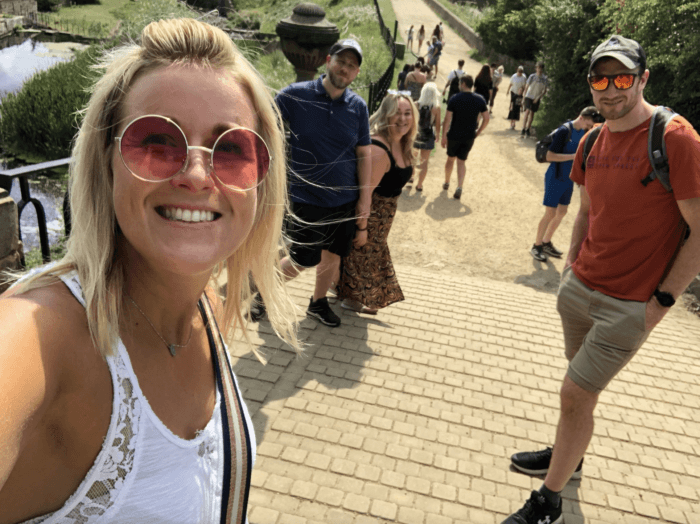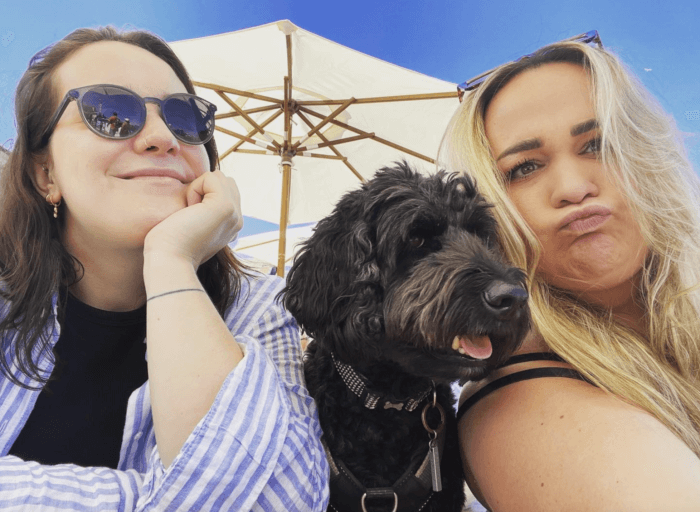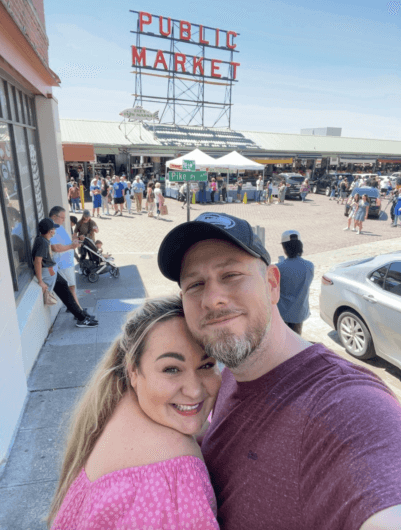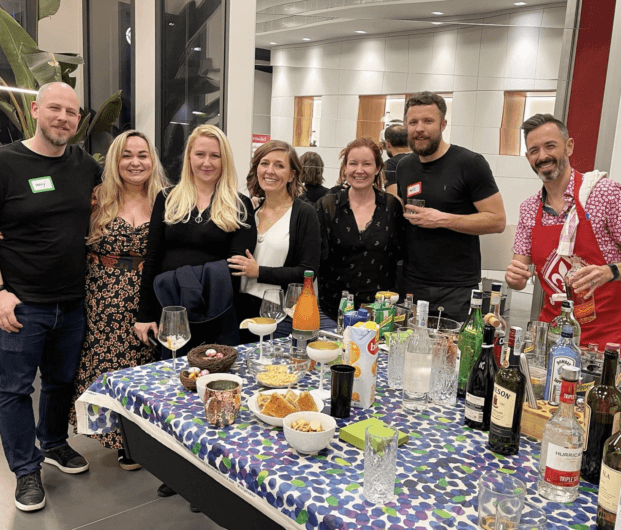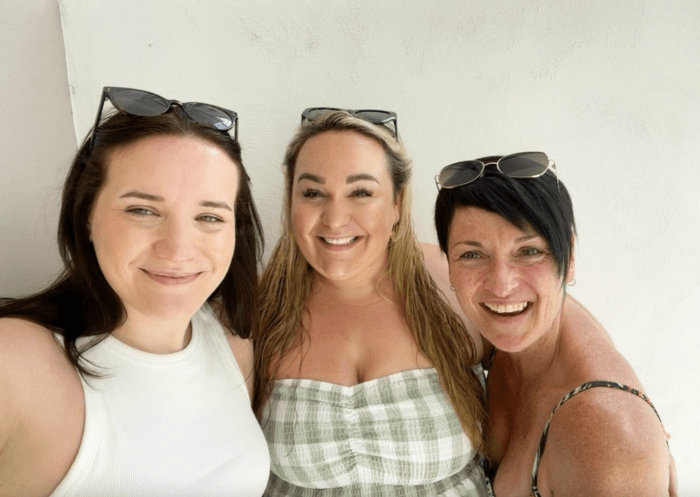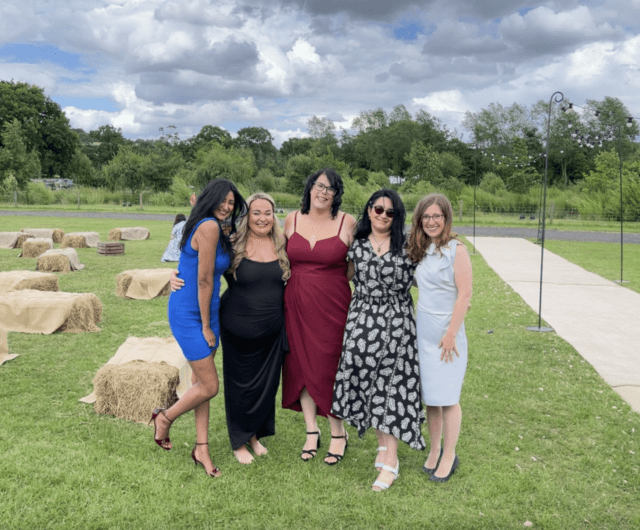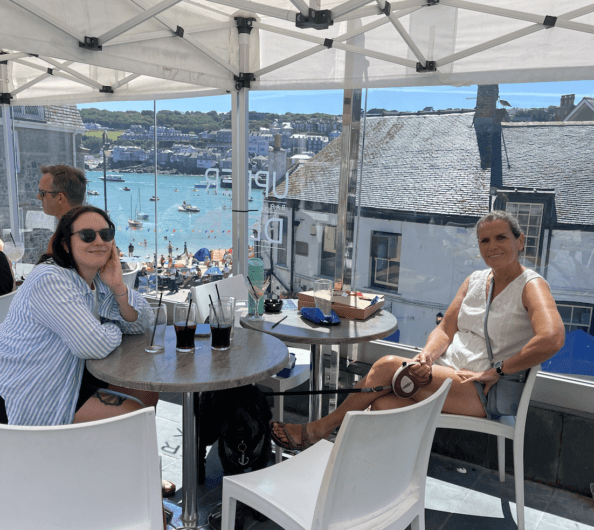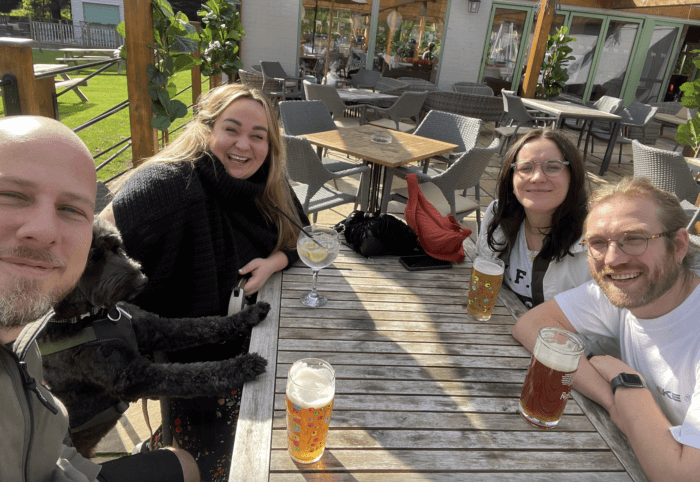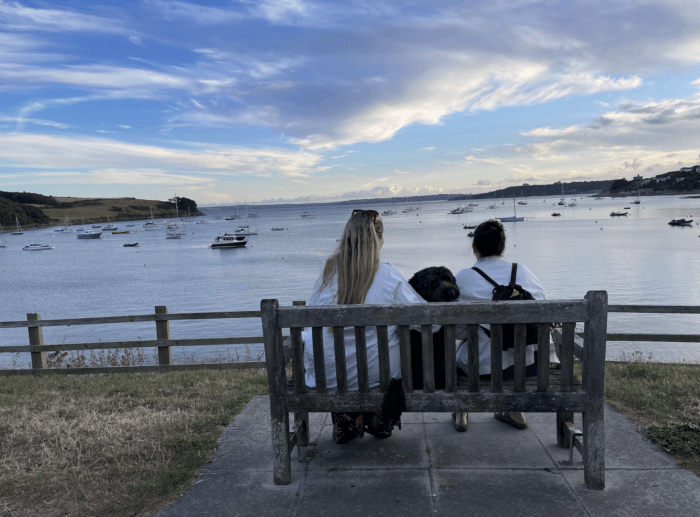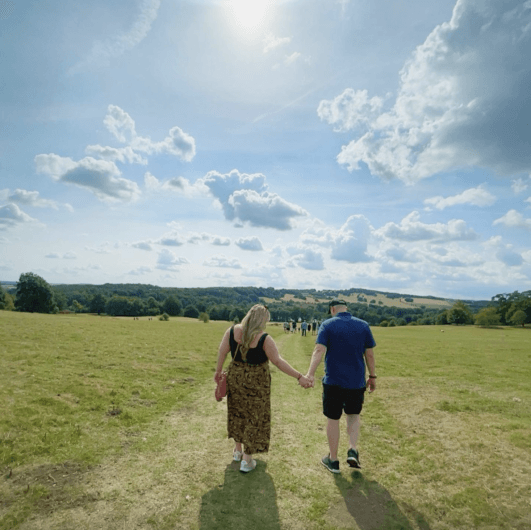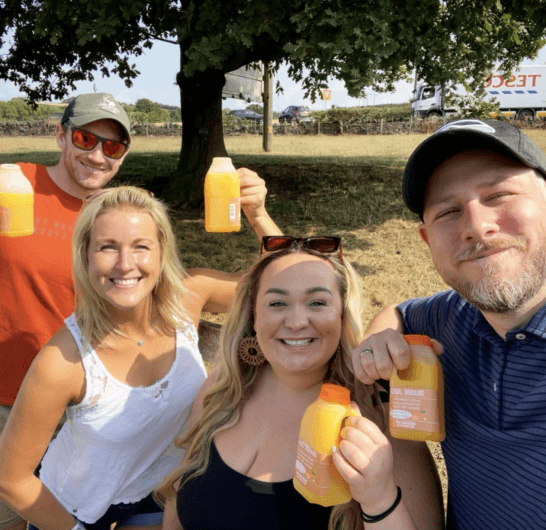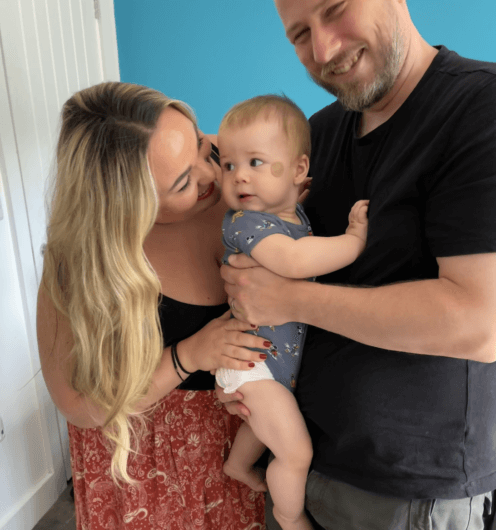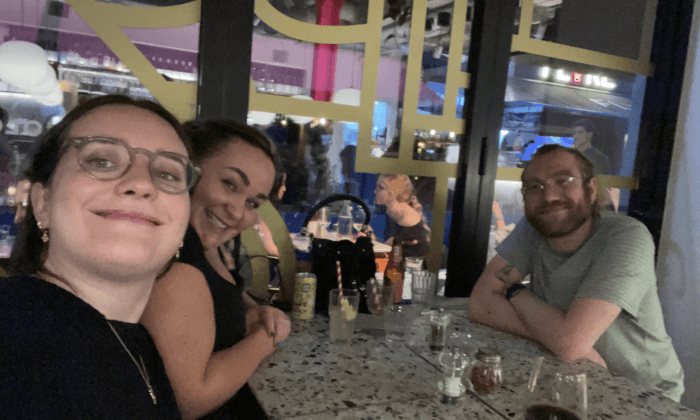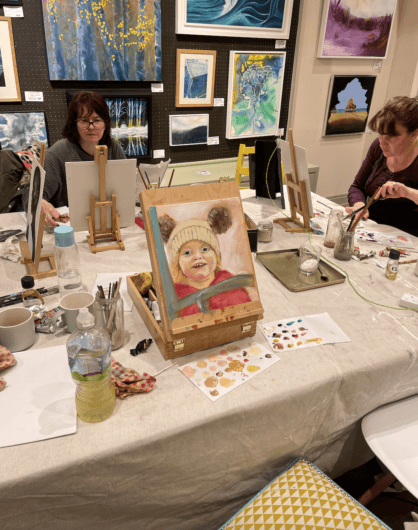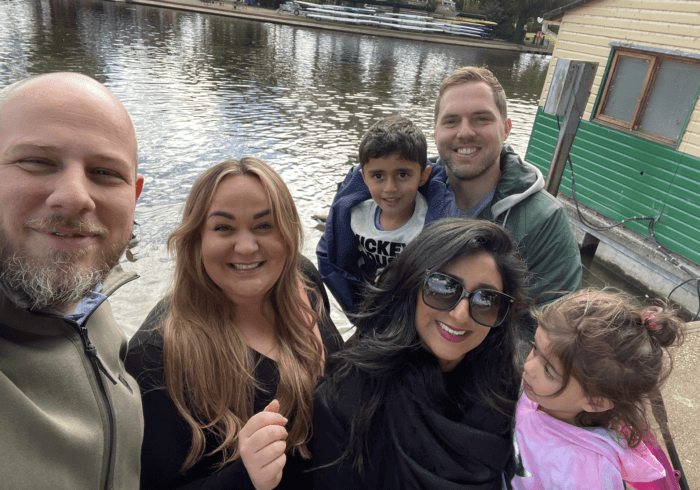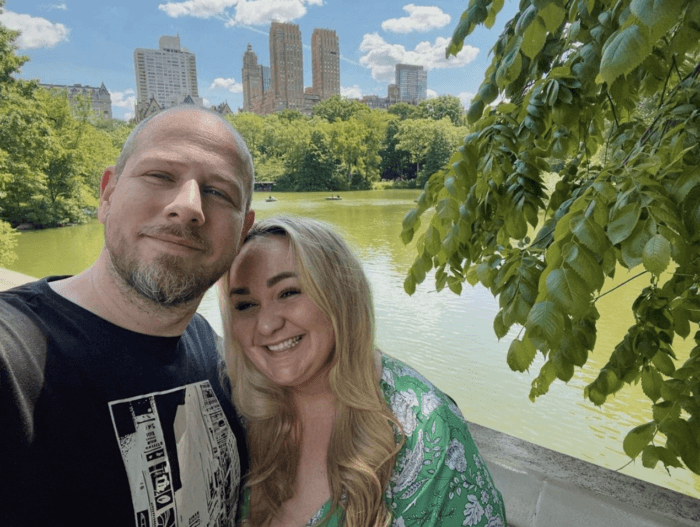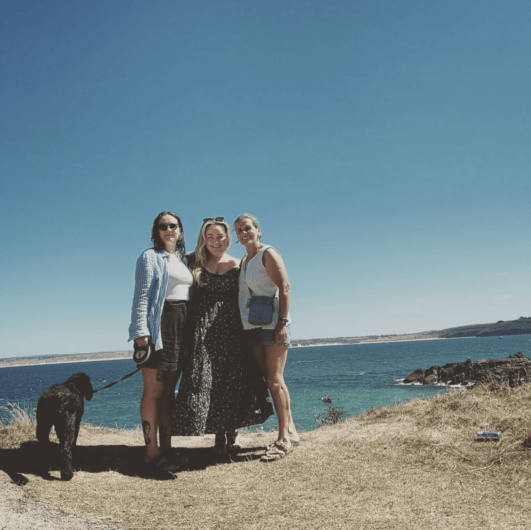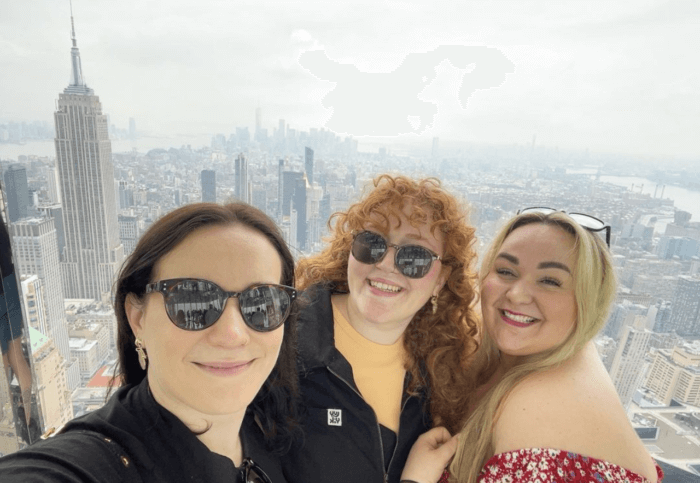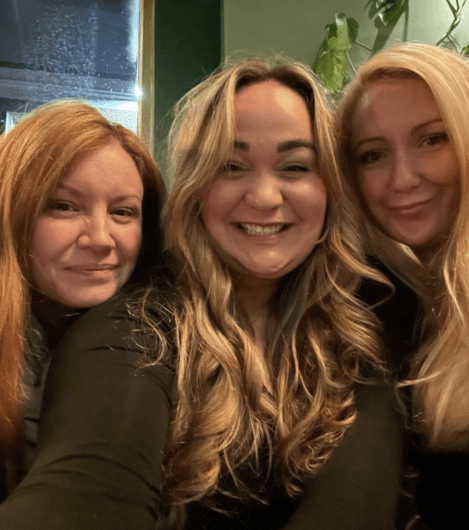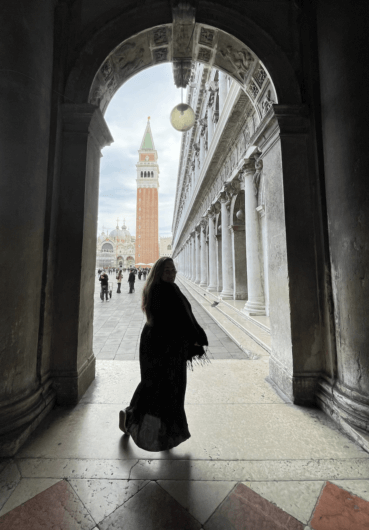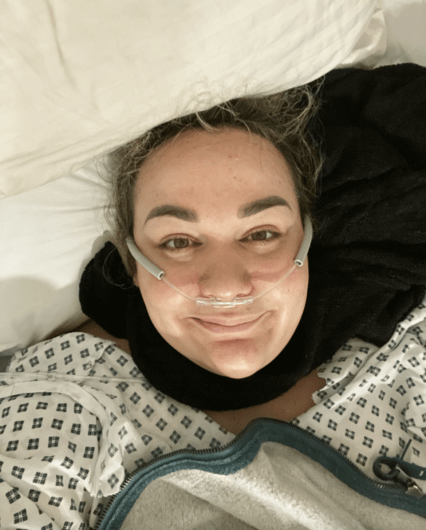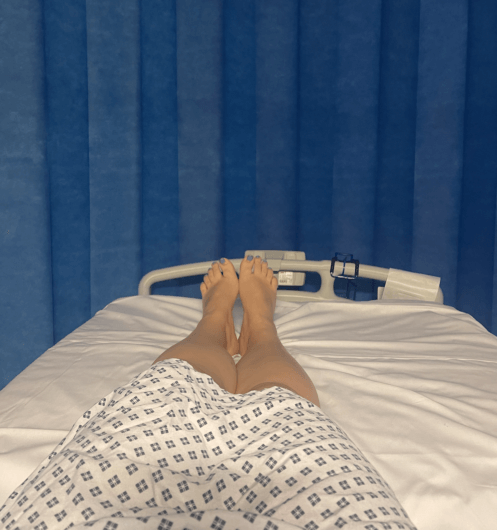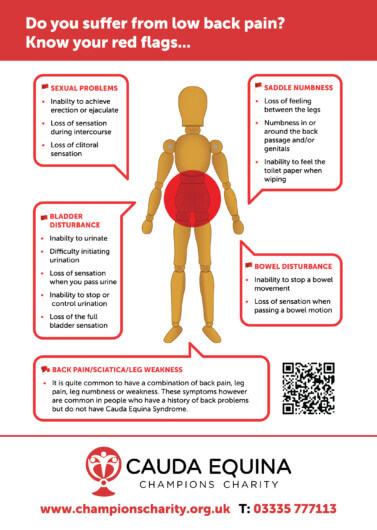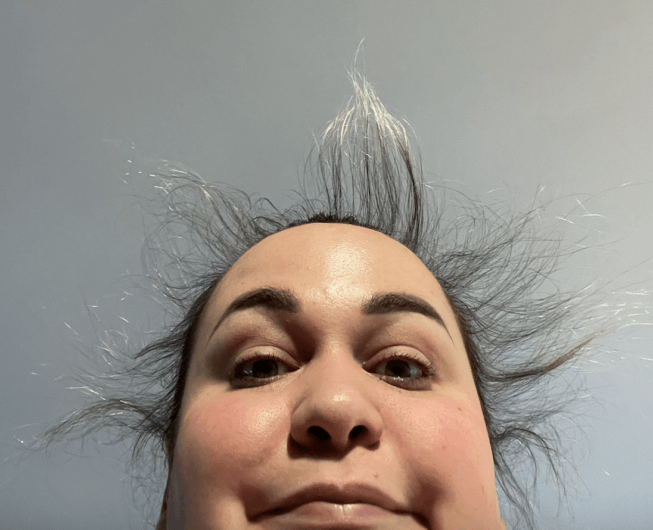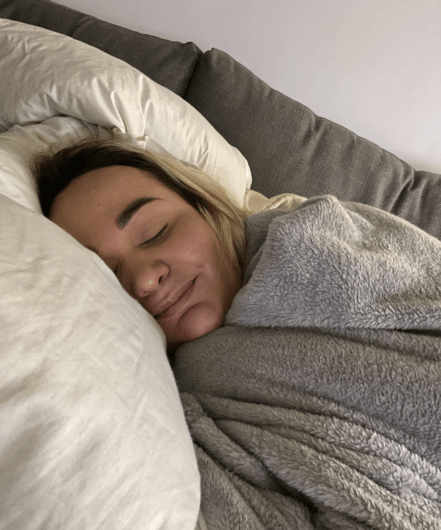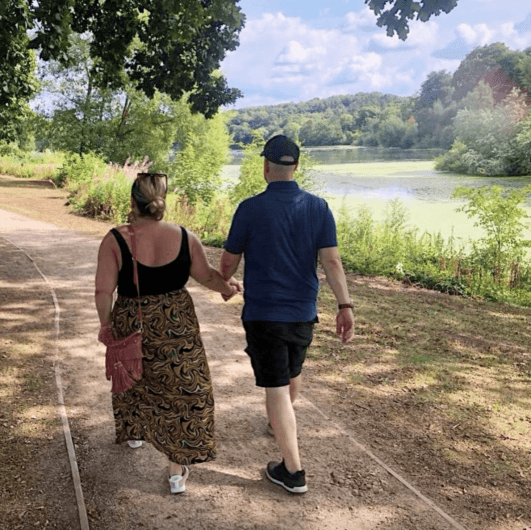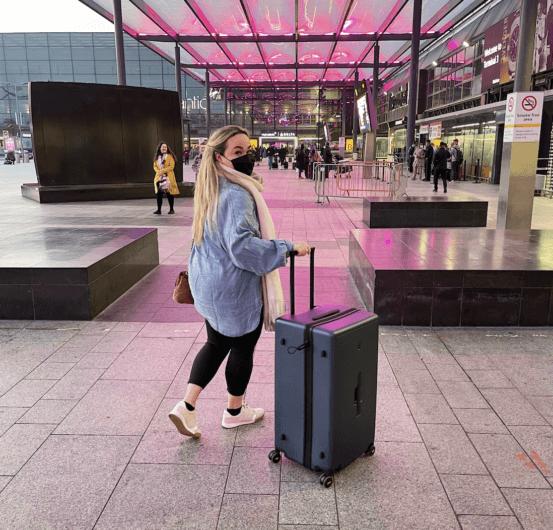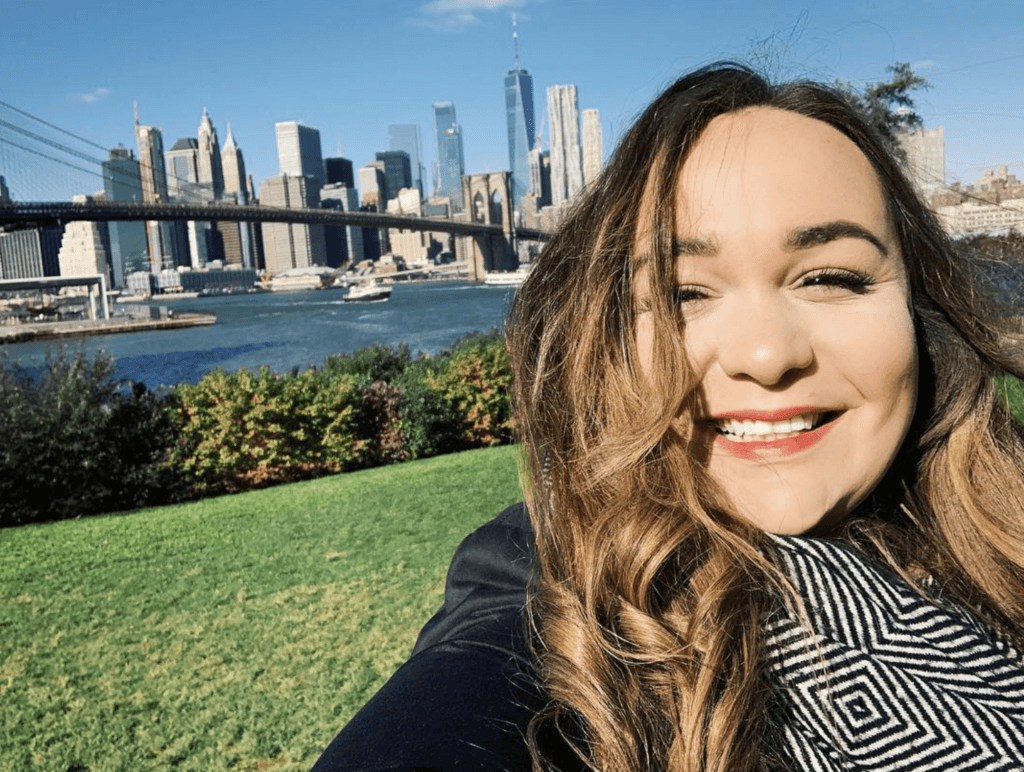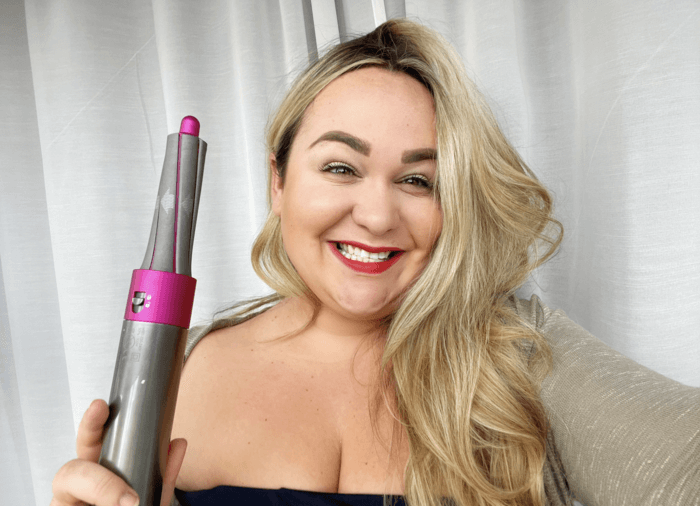Today, December 1st 2022, marks one year since my spinal injury and surgery.
Even a year later, when mentioning the surgery it doesn’t take much for tears to start brimming behind my eyes, and for my hands to begin shaking.
Memories are powerful and trauma is a bitch.
But I wanted to write about Cauda Equina Syndrome, and my recovery in more detail.
Firstly because it’s very rare (and information from actual patients is scarce), but also because I want to try and do my part in helping to educate people about it.
I already wrote about the day I got diagnosed in detail (you can read that here, if you want to).
What is Cauda Equina Syndrome?
Cauda Equina Syndrome is a rare, extremely scary, life-changing spinal condition that can, within 24-48 hours, permanently damage the nerves in your legs, pelvic area and lumbar region.
Because damage to nerves has a lasting effect, this usually means, if you don’t receive emergency spinal surgery within 24-48 hours of the symptoms appearing or being diagnosed, the function, and sensation, of the pelvic area, legs, bladder and bowels can be permanently lost.
For the rest of your life.
For many people, this means paralysis, permanent wheelchair use, loss of bladder use, and lifelong incontinence.
Spinal cord injuries like Cauda Equina Syndrome can have a devastating impact on your life.
It is a hugely serious, and life-altering condition, which isn’t widely spoken about.
I had visited different Doctors multiple times during during my 20s about my sciatic pain and back symptoms, and never, had anyone mentioned Cauda Equina Syndrome and the red flags to look out for. Even though I was already presenting with at least one of the symptoms.
Even post-surgery, I found myself having explain to various doctors what Cauda Equina Syndrome actually was, because a lot of them had no idea.
What causes Cauda Equina Syndrome?
Cauda Equina Syndrome is a spinal cord injury that happens when the Cauda Equina nerves in your lower spinal canal become crushed or damaged. But the cause of this damage can differ from person to person.
For me, it was a fully prolapsed disc, and 2 other herniated discs that caused my Cauda Equina Syndrome.
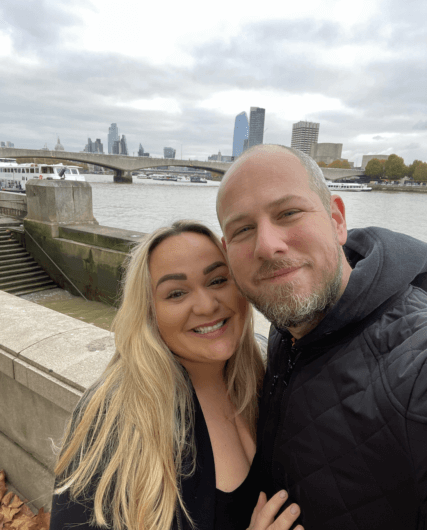
I’m going to try and be painfully honest about symptoms, and about my body – because I think it matters.
For your reference, the red flags of CES are;
- – Loss of bladder sensation
- – Bladder retention (which means not being able to pee – even when you feel like you need to)
- – Bowel incontinence
- – Loss of sensation around your bum
- – Sciatic pain and nerve pain in your legs
- – Numbness or sensation changes in your ‘saddle area’ (this is the area of your body that would touch a saddle, if you were sat on a horse).
- – Unexplained pins and needles
- – Leg weakness and drop-foot
- – Sexual problems and loss of sensation during sex (for men, this may mean the inability to get an erection).
For me, my personal warning signs were:
- – I had unbearable sciatic pain in both legs, and it was constant agony. It was the most pain I could imagine, like hot lightning bolts of pain shotting through my legs and bum. Anytime I walked or stood up. I was experiencing so much pain I couldn’t stand up for longer than a minute at a time.
- – I had mild bowel issues, which I mistakenly assumed were related to IBS. I now know, it was caused by continuous nerve damage.
- – I was getting skin numbness and sensation changes around my lower back and bum.
- – When I walked for more than 5 minutes, my legs would start to go numb, and I would get unexplained pins and needles.
Even though the Doctor insisted I was fine, I had to trust my gut.
Even though my GP insisted I was fine (just go home and stretch, was the advice I was given), I knew something was wrong.
I was in way too much pain to be ‘tolerable’, and the continuous pain was seriously affecting my quality of life. I woke up one morning, and I couldn’t move without agony.
I’d never experienced such a revolt from my own body. Even tilting my body, bending my knees, turning my head, shot pain throughout my entire body.
Because of this, and because of help and advice from my mum, husband and sister, I booked a private MRI scan (something I couldn’t get a referral for with the NHS).
I went via The London Pain Clinic, who upon hearing my symptoms, referred me straight away for the private MRI.
Within a few days of having the MRI, I received a phone call from my new Doctor, who told me to immediately go to A&E, because I would need emergency surgery (the same day) for something called ‘Cauda Equina Syndrome’.
That terrifying phone call happened this time, one year ago.
Luckily, my diagnosis was discovered at the very start of the worst symptoms presenting themselves, and I received emergency surgery within 24 hours of entering A&E.
Had I not booked a private MRI, had I not trusted my gut instinct that something was seriously wrong, and had I not had such a supportive Husband and Mum and sister, I honestly don’t know how bad the damage would’ve been.
And I hate thinking about what could have been. Because my life would look very different right now, had things escalated.
I was actually very lucky.
My spinal surgery happened within 24 hours (very lucky), and my symptoms were spotted before too much damage was done (again, very lucky).
This means that the permanent damage to my body is manageable (if still, extremely difficult).
As of writing, one year on, my recovery positive points look like this:
- – My sciatic pain is completely gone (hurrah!)
- – Walking is now normal, and fine. And for the first time in MANY years, it isn’t painful.
- – I am not in a wheelchair, and that is something I am grateful for every day.
- – I retained full use of my bladder and bowels.
And the negative points look like this:
- – I have some skin and body numbness (which is uncomfortable and unsettling – but not painful). It may resolve itself over time, or it may not.
- – My back still tires easily, and I get a dull ache after several hours of standing or walking.
- – I have some residual muscle loss from the enforced bedrest after the surgery. This will improve with time.
- – I have a rare complication, called a pseudomeningocele from a mistake made during surgery. This is essentially a CSF leak on my spine which causes dizziness and headaches (we’re monitoring as best we can with MRI scans).
- – I have intense nerve spasms and nerve pain. This has been one of the hardest symptoms to come to term with, and means I now rely upon medication for sleeping and resting.
- – I suffer with insomnia, which is a direct result of the nerve pain and nerve damage.
I know some of that might not sound like a ‘good recovery’ but, trust me, as a whole ‘picture’ I’m looking pretty positive right now.
I feel lucky typing this. Because I know I am one of the lucky ones.
Importantly – I can still walk unaided, I kept full use of my bladder and bowels (even though for a few months post-surgery we were slightly worried about my bladder), and I’m living with so much less pain than before.
What is it like recovering from Cauda Equina Syndrome?
I can only speak for my own experience here, because people diagnosed with Cauda Equina Syndrome experience different levels of success after surgery.
My experience was a continuous process of hard work, confusion, embarrassment, depression, and anxiety. Sprinkled with moments of hope, joy, and happiness.
The earliest months were the hardest for sure. From months 1-4 post-surgery:
Some days I couldn’t dress myself.
Some days I couldn’t wash myself.
Some days I sat and cried for hours.
But then, in the midst of that despair and depression, something positive would happen. A small change, or a slight improvement. And I’d be reminded that recovery is a slow and steady journey, with gradual growth, not an instant one that happens overnight.
I often felt tiny improvements, but those improvements were overshadowed by the depression, the anxiety, and the mental strain I was under.
Some months I felt great, and then I would mentally and physically plummet the day, week or month afterward.
It was unpredictable and exhausting.
My brain would go into a major panic if it felt something new or unexplained. My anxiety would spiral if my sensation changed from one day to another. My migraines returned, because of stress. So then I had to track everything and anything – because it was the only way to keep my stress under control.
I still find myself over-analysing every symptom, every flutter of pain, every sensation. I still worry about doing certain activities, or pushing my body too hard.
I still sleep badly because of trauma dreams, I still have to ask for help with certain tasks, and I still find myself second-guessing any progress I make.
And I just wasn’t expecting the recovery to feel so straining.
Linguistically, recovery is a positive word, so you assume the experience of it will be positive too.
The reality was much different.
Recovery is fucking difficult. And remains so for a very long time.
So, even a year after my surgery, I am still recovering.
My body and mind went through something incredibly traumatic, and only now, am I feeling calm enough, and in-control enough to begin processing it.
Some mornings, I wake up feeling like I’m living in someone else’s body. Not in some spiritual way, but in a way where I physically don’t recognise the sensations I feel anymore, and my brain and body don’t seem connected yet.
That has been a really hard thing to deal with, it’s a little bit like internalised body dysmorphia. And it’s something I’m still trying so hard to wrap my head around.
My brain is still adjusting, my muscles are still growing, my nerves are still healing. I still need to build up my strength, flexibility and movement.
And, perhaps hardest of them all, I need to build trust and confidence in my body again.
I am healing, but I am not healed.
It will all come in time. And I’m trying to be patient.
It has been a lot to handle mentally, and physically, and I was so lucky to have my incredible husband by my side throughout it.
The number of times he talked me out of spiralling, or calmed me from panicking – I have lost count. For the first 2 months, he dressed me every morning. He learnt how to change bandages. He installed numerous items around the house to make life easier for me.
We worked through the initial recovery, and then we worked through the complications. We found ourselves in many difficult conversations, in many surgeon appointments and MRI scans. You drove me to every single one, and paid a hell of a lot in hospital parking fees.
There was other stuff you helped with too, but for my own dignity, I’m choosing not to write those on the internet.
Pad, I know you’ll read this. You know what those things were. Thank you for all of it.
Recovery was hard – but it would’ve been so much harder without some very important people.
And because I hope you’ll all also read this – Thank You.
Pad, Bekah, Mum, Anita, Tony, Harriet, Jess, Bear, Charli, Ronan, Si, Kate, Shannon, Steve, Charnjit, Joe, Nicola, Jess, Alex, Tom, Janine, Sandi, Rosie, Grace, Phil, Mark, Geraldine, Rand, Lisa, Lindsay, Emily, and so many other friends and family for any support and love you’ve sent me this year.
Thank you for every hug, every phone call, every thoughtful message, every box of brownies, every cupcake, bunch of flowers, and every funny TikTok – they all helped so much during the worst times.

It’s hard to write the following, but right now I feel good and strong.
Why is it so hard to write that?
Because for my entire recovery I’ve lived in constant fear of events repeating themselves or pain returning.
The first 6 months of this year were a constant struggle. Most days I would wake up, in a body that felt like it didn’t belong to me, with pain or sensations I wasn’t sure how to cope with, or how to manage.
And then, we also found the pseudomeningocele. A complication we didn’t expect, and that put my anxiety back into full force, and put a bit of a question mark over my recovery time.
But this recovery is a long game, and I’m trying to come to terms with that. The pseudomeningocele could take years to reabsorb into my body, or it may never disappear.
I’m also told that nerves can take up to 3 years to recover, and sometimes they never do.
So, with all of that, comes acceptance.
This thing happened. And it sucked.
It was so difficult. And I’m different now, in many ways.
Eventually, I’ll be at peace with it all. That time will come, I’m sure of it.
For now, I just want to feel more confident, in everything.
I want to feel strong again.
I want to feel like I can be spontaneous again.
I want to trust my body, and have the confidence to do ‘normal’ things again.
And I’m getting there, step by step.
I have travelled a lot this year, I’ve walked so much more than I ever have. I’ve challenged myself in ways I didn’t ever expect. Most days I feel good, and wake up with a smile on my face.
I feel excited for next year. I might still be anxious, and a little nervous. But mainly, I’m excited to keep doing the things I love, and to keep improving.
But some things will take much longer, and I know that.
Who knows, maybe in a year’s time, I’ll be writing about running a marathon.
But I doubt it.
Some things will never change. Like my hatred of cardio.
And because I want to end on a good note…
I know this blog post probably hasn’t been the most thrilling, or cheerful. But I wanted to write about the reality of recovery.
I wish I had known going into all of this, how difficult it would be. There’s something to be said for bracing yourself and just being honest about it.
I also wanted to write this for anyone currently recovering from CES, so they know that things do get better.
Because I promise they do.
I look back at those first 6 months after the surgery, and I don’t really recognise myself. It was like living in a rain cloud, I couldn’t see further than a few weeks ahead, and everything was so foggy and grey.
But then the clouds clear, and you start remembering who you were before all of this happened. And also, maybe who you can be once all of this is over.
If you wanted to donate something to help others with Cauda Equina Syndrome, this is the main charity in the UK.
Cauda Equina Champions
Not everyone diagnosed with Cauda Equina Syndrome was as lucky as me. Many people have to live the rest of their life with walking aids, wheelchairs, catheters, and help.
Adapting to a new disability is emotionally difficult, but also logistically difficult – and these charities help people with that transition.
This charity also campaign for CES awareness and education, which (inevitably) will help doctors catch more cases of CES sooner. Resulting in better outcomes, and easier recovery, for patients.
To finish?
Well, despite everything, 2022 was still a pretty great year.
Here are some nice memories.

